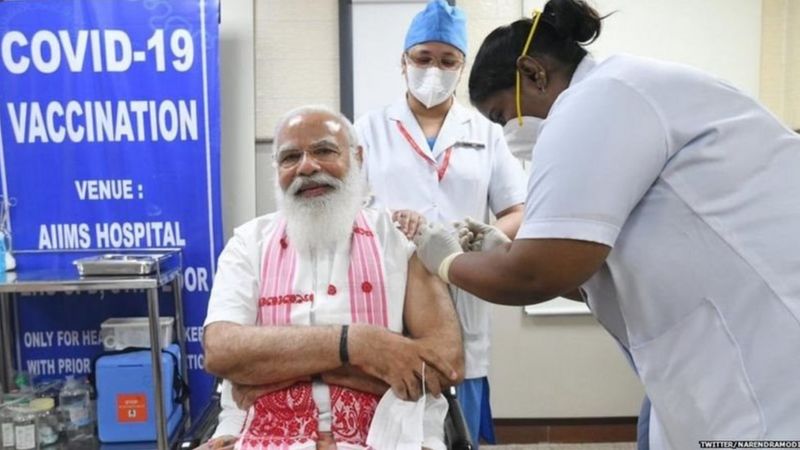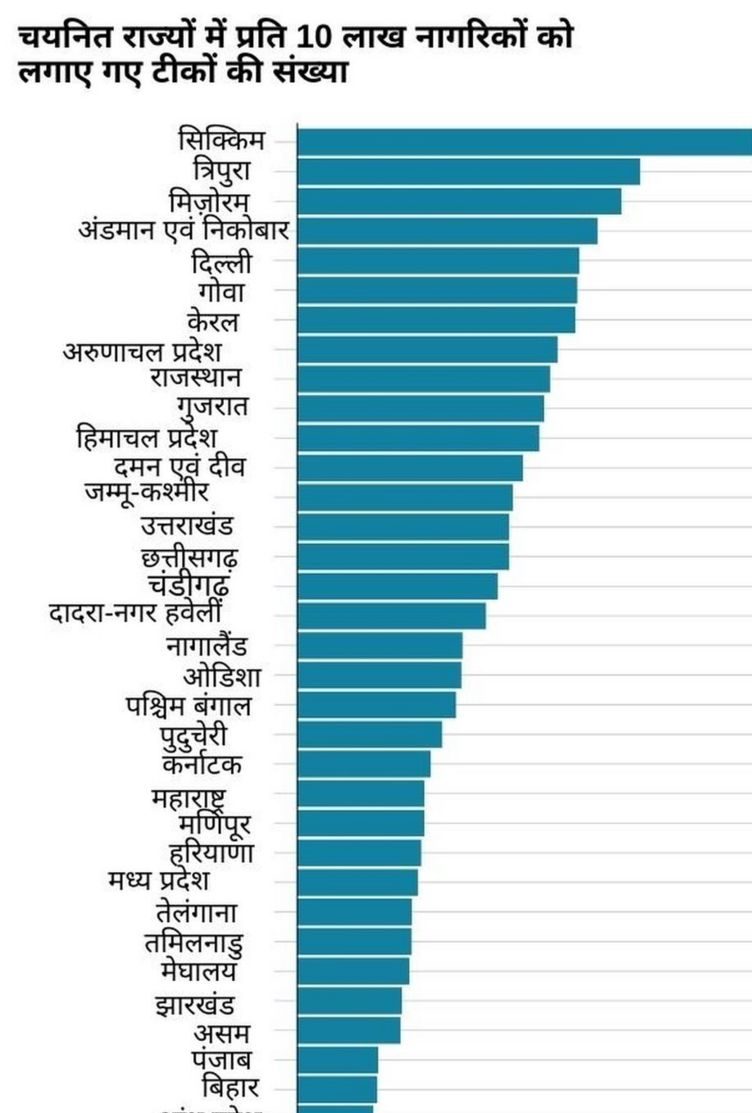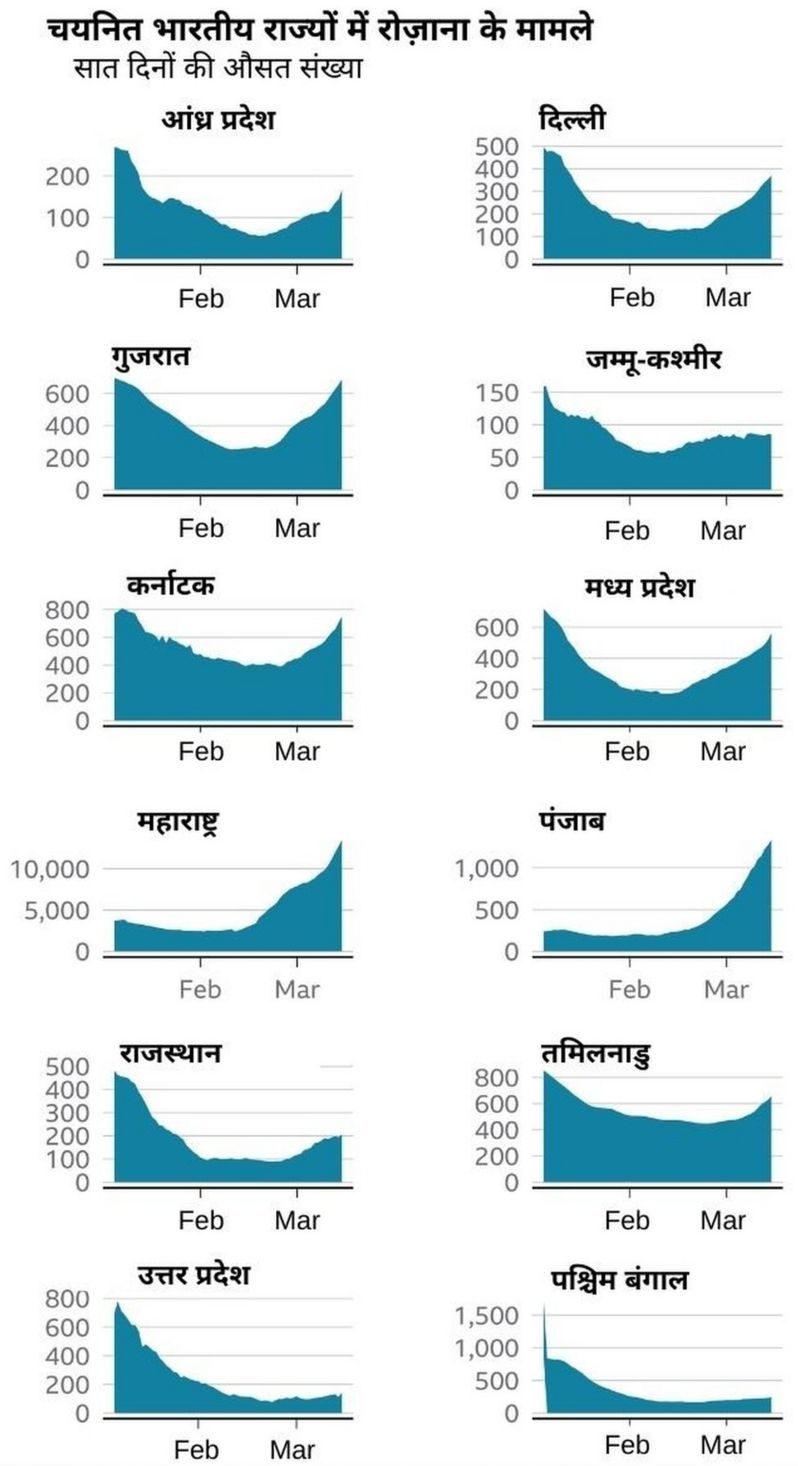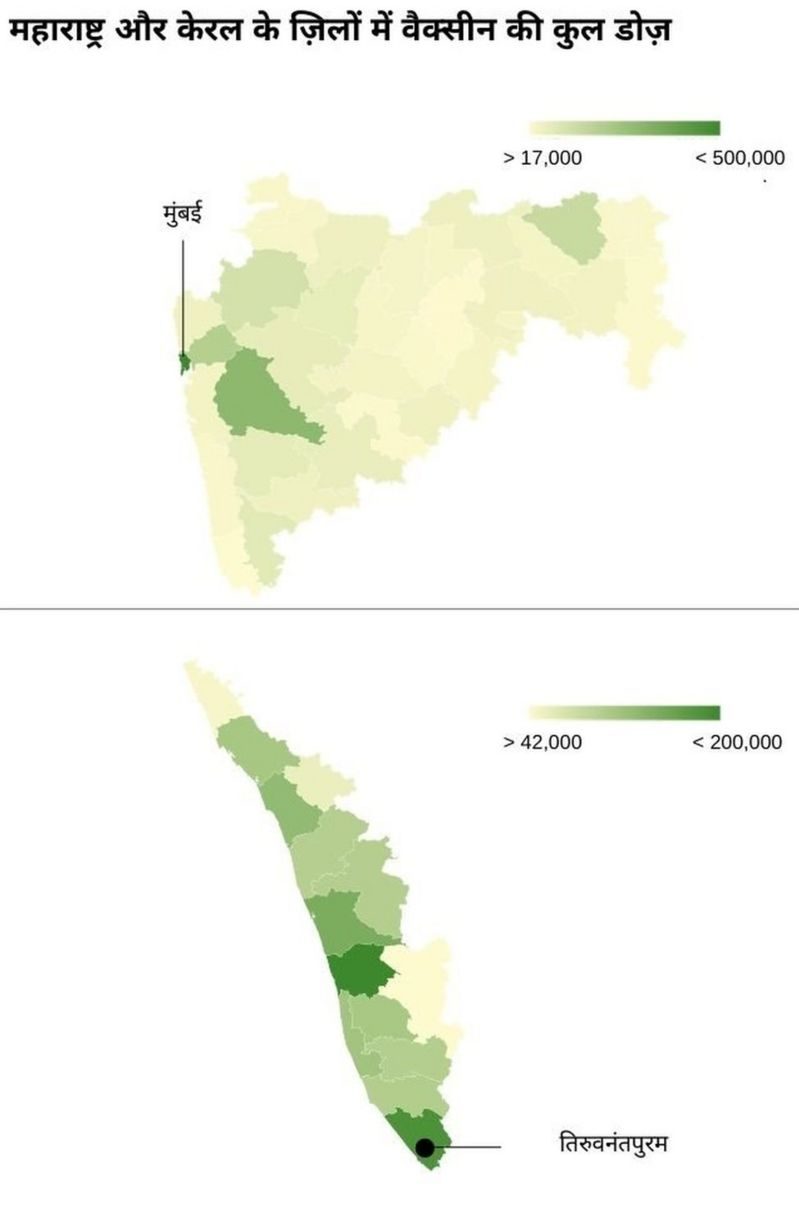
Why new cases rise in India even after the introduction of Corona vaccine

Prime Minister Narendra Modi has called a meeting of all Chief Ministers on Wednesday to discuss the growing cases of Covid-19 infection.
New cases rise in India India’s vaccination campaign, which started at a slow pace in January 2020, has now gained momentum. Many had hoped that the more people would get the vaccine, the less the new cases of Corona would be seen. But Ho is turning the opposite. What are the reasons behind this, let us try to understand with the help of statistics.
As of 14 March, more than 2.9 crore doses of the Kovid-19 vaccine have been placed in India. Out of which 18 percent have been given second dose.
Small states like Sikkim, Arunachal Pradesh and Delhi have given maximum number of vaccines per 10 lakh population. However, other states are also moving fast. Kerala, Rajasthan and Goa have given more than 35,000 doses per 10 lakh population.

Even though more and more people are getting the vaccine, the increasing cases of corona are increasing daily. In most states, the graph of new cases coming up every day is going up.
For instance, again in Maharashtra, more than 13,000 new cases are being filed daily, which came down to less than 3,000 in a single day in January.
In small states like Punjab, where less than 300 cases were being reported daily in the beginning of January, now more than 1200 cases are being reported again. These are 5 times more than in January.

New cases rise in India Vaccine effect
Can the vaccine stop the rise in cases? To understand this, it is important to see how much of the population has been vaccinated in India till now.
new cases rise in India Suppose 100 people live in India, then according to that, 2.04 of them have got the vaccine.
These 2.04 doses have also been given to those who are health workers / frontline workers or those who are more than 45 years of age and more than 60 years of age with severe illnesses.
Now let us look at the example of Tamil Nadu, which has released data of new daily cases on the basis of gender and age.
Since the beginning of vaccination for common people from March 1, the number of daily cases of people of this age (60+) has decreased. In the beginning of January, the increase in new cases was 24 percent and since March 1, now it has come down to 22-23 percent.
In Tamil Nadu, the decrease in 60+ age cases is very small and remains within the historical range.
Can we consider this to be the effect of a vaccine? It is too early to say because the virus is spreading equally among people of all ages.
So when will we know that the vaccine can be effective against growing cases?
If in the coming months, the number of new people increasing daily, the number of people continues to decline and young people are more in the number of hospitalized daily, then we can think that the vaccine is helping to reduce the number of new cases.
In Kerala, the percentage of health workers in new positive cases after vaccination has decreased significantly. This has been reduced by almost 40 percent as compared to the previous months.
Initial statistics show that even though cases have increased in the states in recent times, the vaccine is helping to reduce the number of new cases.
Difference between villages and cities
Although vaccination is happening in greater numbers than before, the difference in vaccination in cities and villages in big states like Maharashtra, Kerala and Karnataka is quite clear (only district-wise data exists for these states).
One reason for this is that people in cities are more conscious and aware about the vaccination campaign and are registering more to get vaccinated and are coming.
For example, by March 12, more than 190,000 people over 60 years of age in Mumbai have received their first dose of vaccine.
Similarly, in other districts like Pune and Nagpur, 90,000 and 49,000 old people have been given the first dose.
If you compare it with other districts like Beed and Dhule, then less than 9,000 people have got their first dose of the vaccine so far.

The spread of the virus has spread beyond densely populated cities to small rural districts.
A few weeks ago, Amravati, another district of Maharashtra, became a hot spot for new cases every day. When the vaccination was investigated in Amravati, it was found that there is a clear difference.
As of 12 March, more than 16,000 old people have received their first dose of vaccine, which is much lower than in other districts like Ahmednagar and Kolhapur.
The lower the vaccination gap between rural and urban districts, the more it will help the states in dealing with the increasing daily cases.
Also read: JEE Main 2021: JEE Main Examination of March Session from today



